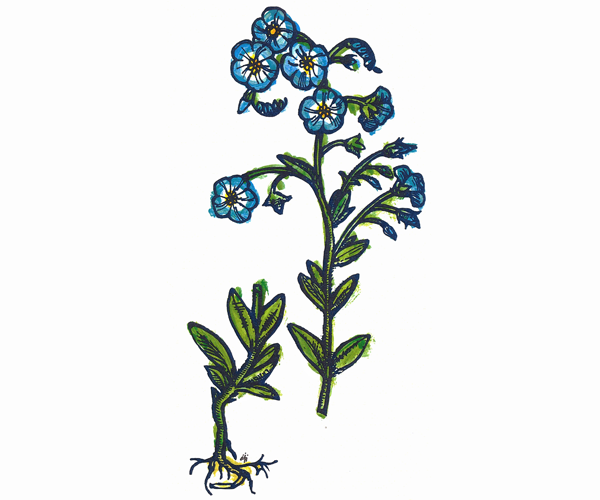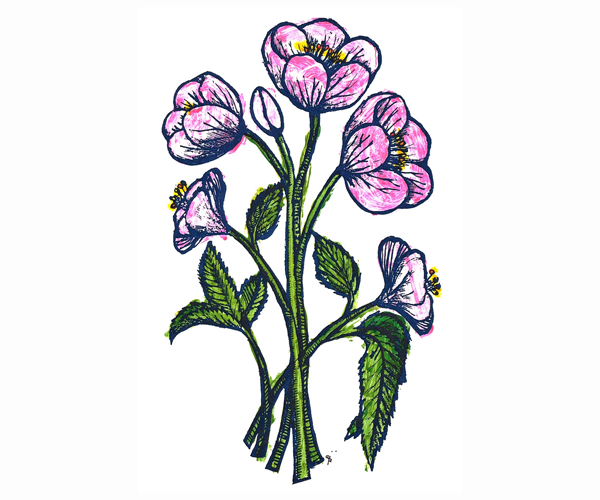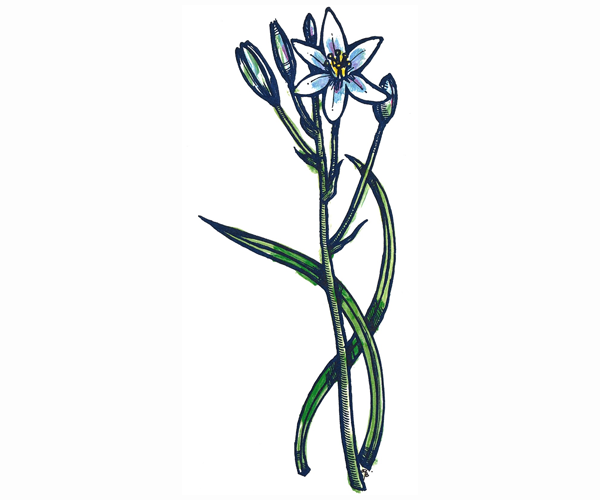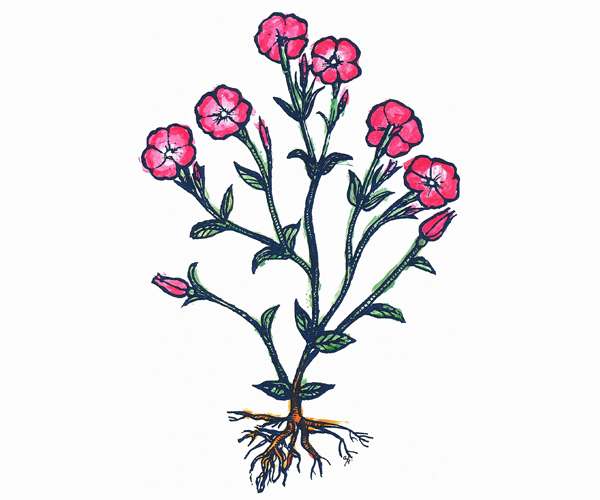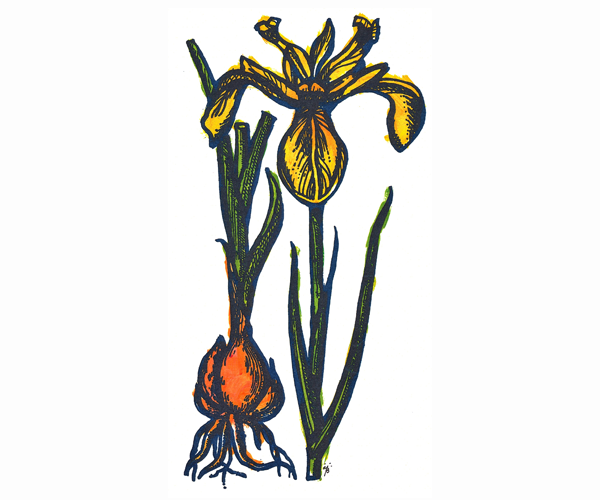Blogs
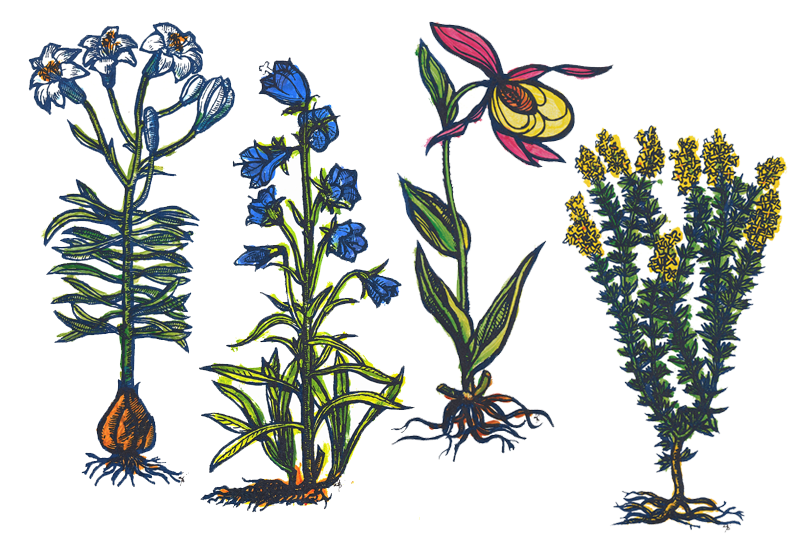
Mother Earth, Mother Mary’s Garden
By Michelle Schweickart
Lilies for her purity,
Blue bells and morning glories for the cloak she wore;
Baby’s Breath for the child she nurtured,
And for her willing feet the Lady Slipper;
Foxglove to warm her gentle hands,
Sweet Woodruff (Bedstraw) for her rest.
— Author unknown
In her 1999 book Mary’s Flowers: Gardens, Legends and Meditations, the late author and longtime Marian Library volunteer Vincenzina Krymow acknowledged that it is difficult to know when or even where the first Mary Garden was planted — but we do know some of the historical context surrounding the use of Marian flower names and their legends.
Most of these legends, Krymow wrote, were the “offspring of pious thoughts by pious people.” Medieval Christians looked for traces of Mary in the world around them, finding particular meaning in flowers and plants. They were able to make connections between these flowers and plants with those mentioned in the Bible and to events in the lives of Jesus and Mary. Since most medieval Christians were illiterate, they passed down the legends or lessons associated with these flowers and plants through oral tradition. Later, botanists and folklorists doing field research discovered and documented these stories and lessons. As the popularity of naming flowers after Mary increased, so did their depictions in Marian art.
Krymow noted that flowers began to appear in paintings of Mary during the pre-Renaissance period and were usually white or blue and represented different symbolic aspects of Mary including her attributes, events in her life, her features and even her garments. The lily symbolized her chastity, the violet her humility, the rose her martyrdom, love and heavenly joy.
Marian Flower Art in the Marian Library Collection
The Marian Library holds and continues to grow collection items related to Mary Gardens — including the John Stokes and Mary’s Gardens Collection and the Vincenzina Krymow Collection. Other examples of Marian flower art in the Marian Library Art and Artifacts Collection are works by Brother A. Joseph Barrish, S.M., Holly Schapker, Marilyn Hart, Katrina Rose Harrington and Louise Tessier. Particular favorites of mine are the original watercolor and ink illustrations Barrish created for Krymow’s book. As I worked on adding them into the collection, I was drawn to each of these unique and beautiful images. On those cold, gray days in December, they were a welcome reminder of the beauty of springtime and the feeling of renewal and hope that the first blooms bring each year. Each one has muted yet vibrant colors, hand-drawn ink details and the common flower name handwritten next to the image. They are reminiscent of 18th- and 19th-century scientific botanical illustrations. The illustrations are drawn and painted with great attention to detail, each line and brush stroke made with precision. Barrish’s use of gradient coloring, shading and highlighting add to the realism of the flowers. When viewed alongside the meditations written for the book by former Marian Library and International Marian Research Institute (IMRI) staff member Sister M. Jean Frisk, S.S.M., and with Krymow’s accounts of the historical legends and traditions associated with each flower, the illustrations gain a layer of depth and meaning. They become more than just beautiful pieces of artwork; they can be appreciated through the lens of their history and significance in connection to Our Lady.
Make sure to look below for a few of Barrish’s illustrations, accompanied by my favorite legend for each flower that Krymow shares in her book. Each illustration is from the Marian Library Art and Artifacts Collection.
Mary Gardens and Our Lady’s Flowers at UD
Our Lady’s flowers can also be found throughout campus. Two worthwhile stops are the Mary Courtyard Garden and the Serenity Pines Garden. The Mary Courtyard Garden is between St. Mary’s Hall and the Chapel of the Immaculate Conception. Inside the garden is a mosaic shrine created by Brother Don Smith, S.M., and a selection of Marian flowers and plants. Serenity Pines Garden is on the hillside south of Marycrest Residence Complex. This six-level garden features Marian flowers and plants, some accompanied by stones inscribed with information from Krymow’s book about the flowers’ association with Mary and Scripture. In the center of the garden is a waterfall with a millstone at the top, and inscribed around its circumference are these words from Marianist co-founder Blessed William Joseph Chaminade:
I am like a brook that makes no effort to overcome obstacles in its way. All the obstacles can do is hold me up for a while, as a brook is held up; but during that time it grows broader and deeper, and after a while it overflows the obstruction and flows along again. That is how I am going to do my work.
As Earth Day approaches, my work with this collection has prompted me to reflect on ways that I can work to take better care of our planet and our campus here at the University of Dayton. I hope it will inspire others to do so as well.
Other Resources
See the Earth Day organization for more information on how you can participate in Earth Day 2023.
Read about the University of Dayton’s sustainability efforts and becoming a “green college.”
UD’s dining services has a Go Green reusable container program. Each time you get a carry-out meal, it comes in a reusable container that can be dropped off in Go Green containers on campus. Read more about it and register.
Interested in learning more about Mary Gardens or even creating your own Mary Garden? Explore the Marian Library’s Mary Gardens Collections page.
Interested in seeing more of Brother Barrish’s Marian flower art? Check out the matching card game on the Marian Library activity page Fun and Games with Mary featuring more of his Marian flower illustrations.
Sources:
- Krymow, V. and Frisk, M.J. (2002). Mary's Flowers: Gardens, Legends and Meditations. Illus. A. Joseph Barrish, S.M. (2nd ed.). Tau Publishing.
- Mary Garden: University of Dayton. (n.d.). University of Dayton. Marian Library. All About Mary.
- Serenity Pines Garden: University of Dayton. (n.d.). University of Dayton. Marian Library. All About Mary.
- University of Dayton. Marian Library. (n.d.). Mary Garden Collections.
— Michelle Schweickart is a library assistant in the Marian Library.

